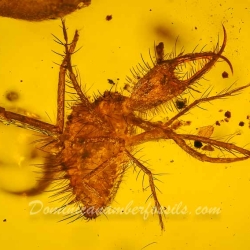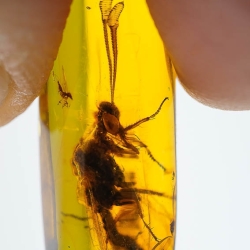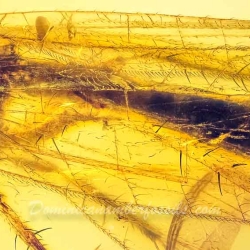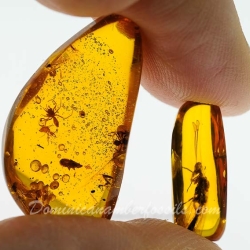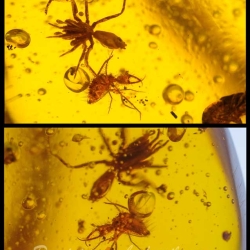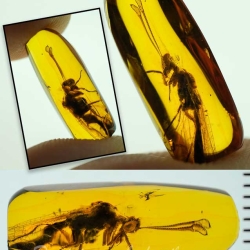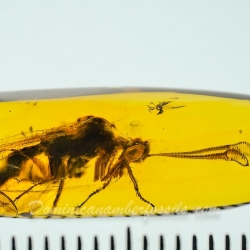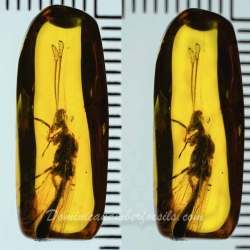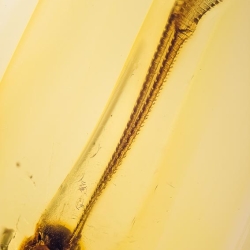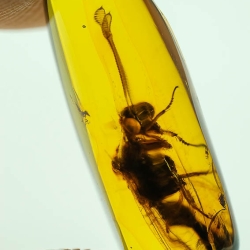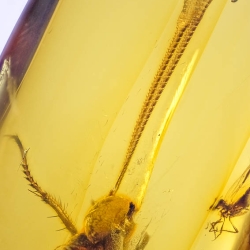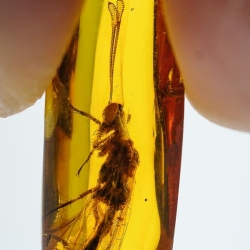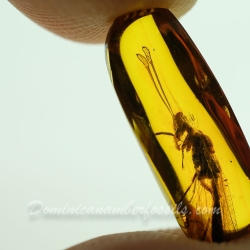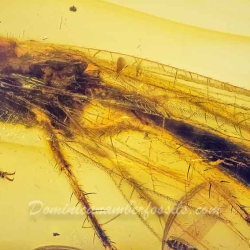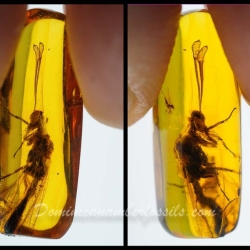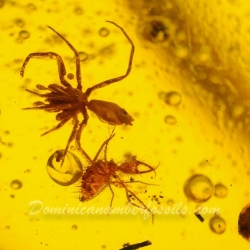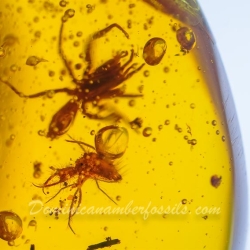- Description
- Specifications
Genuine Dominican Amber Fossils
Fantastic World Class Museum Inclusions
LARVA & ADULT ANTLIONS (NEUROPTERA PLANIPENNIA MYRMELEONTIDAE)
Adult antlions are medium to large size insects. They resemble damselflies (Order Odonata) but differ in being soft bodied, in having clubbed antennae as long as the head and the thorax combined, and a very complex wing venation. Also, unlike damselflies, when at rest, antlions held the wings rooflike above the body. While odonates are strong and speedy diurnal fliers, antlions are very feeble fliers and have nocturnal habits. Adult antlions have a short life span and little is known about their behaviour. They mate in the summer and the female lays her eggs in sandy soil. Antlions undergo a complete metamorphosis.
Larvae have a grotesque, robust, fusiform grey-brown body, bearing three pairs of walking legs and a slender neck. Their small trapezoidal, flattened head bear an enormous pair of sicklelike jaws (mandibles), each one with three pairs of sharp, teethlike projections. Head, body and appendage surface are covered with many long bristles oriented laterally. They prey on ants and other ground insects. Some species construct conical pits in sandy soil and wait for the prey at the bottom of the trap, leaving only the sicklelike jaws protrude from the sand. Catching behaviour comprises sand tossing, prey beating, grasping and prey submersion. After consuming all the contents of the prey antlions larvae flick out of the pit the lifeless, dry carcass of the prey. Larvae have an unusually long-life cycle that may take two or three years. When is full grown, at the end of the third instar, the larva pupates in a spherical cocoon made of sand and silk. One month later an adult antlion emerges from the pupal cocoon.
* * * * *
Antlions are super rare in Dominican amber; only a single species, Porrerus Dominicanus has been described by Poinar and Stange* The original description was emended by Engel and Grimaldi ** who also reported two additional specimens and described a larva of Myrmeleontidae tentatively assigned to Porrerus Dominicanus.
* * * * *
This adult specimen was trapped in a clear amber stone while at rest, with the wings held rooflike above the body and is very well preserved. It differs from Porrerus Dominicanus in having longer antennae and hairy wings.
Length of antennae +/-5.9mm. Length of body +/-5.6mm. Amber piece 19.7 x 7.6 x 6.4mm - 0.652g
The larva is well preserved along with a spider and a nymph of Homopteran. Its mandibles are much longer than the head. Head, body and legs are densely covered with elongate rigid black bristles.
Amber piece 32.7 x 17.1 x 10.6mm - 3.258g
* Poinar, G.O. Jr. and L.A. Stange, A new antlion from Dominican amber (Neuroptera: Myrmeleontidae). Experientia, 1996, 52(4): 383–386.
** Michael S. Engel and David A. Grimaldi, The Neuropterid Fauna of Dominican and Mexican Amber (Neuropterida: Megaloptera, Neuroptera). American Museum Novitates, 2007, 1-58.

